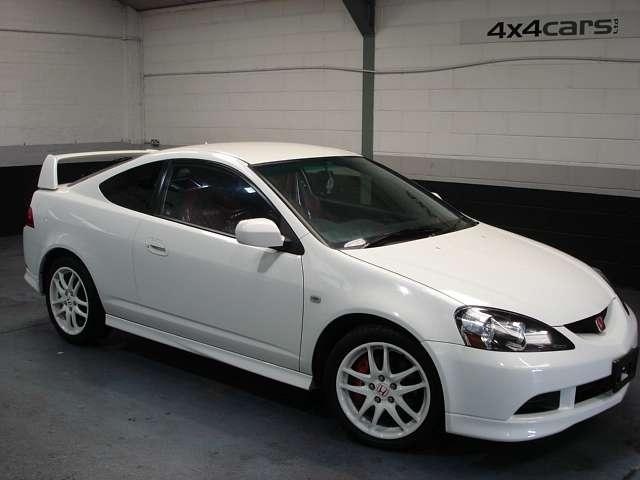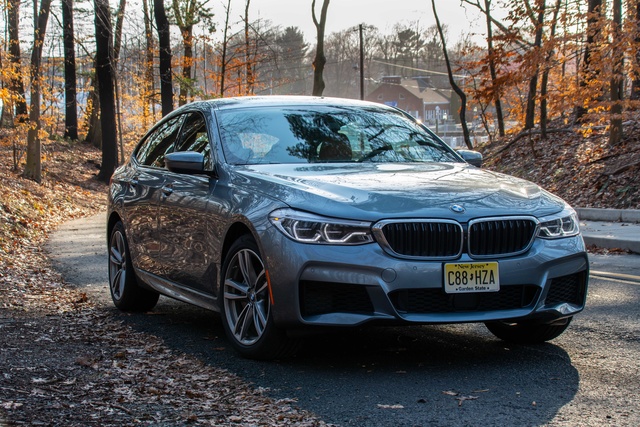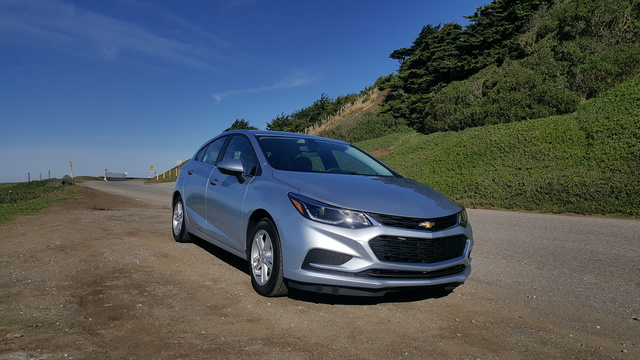The Dodge Neon SRT-4 was a short-lived, three-model-year performance variant of the second-generation Dodge Neon. Dodge (and Plymouth) also offered the first-generation Neon performance versions, namely the lightweight ACR, which was officially aimed at SCCA showroom stock racers. Both generations of Neon originated as small, light, front-wheel-drive commuter cars but often had powerful engines for their class. However, none of the other Neons were anywhere near as fast or as extensively modified as the SRT-4.
There have also been many name changes in the SRT-4’s orbit since the car was first conceived. The SRT-4 was developed by the Street & Racing Technology (SRT) division of the company then known as DaimlerChrysler (now Stellantis). Also variously known as Specialty Vehicle Engineering (SVE) and Performance Vehicle Operations (PVO) prior to coining the SRT name, this team also developed the Dodge Viper, the Plymouth (later Chrysler) Prowler, and much later, every performance car to come out of Dodge, including the various Hellcats of the past decade.
The Neon SRT-4 was first conceived by Tom Gale, then the Executive VP of Chrysler Product Development and Design, after seeing a major surge in sport compact cars and tuner cars like the Honda Civic and Toyota Corolla at the Specialty Equipment Manufacturers Association (SEMA) show in Las Vegas in 1998.
Gale was also one of the driving forces behind the original Viper and its second-generation successor, and he saw an opportunity for the SRT team to warm over its own Neon compact sedan. The concept car featured a 2.0-litre four-cylinder with an Eaton supercharger. When it debuted at the November 1999 SEMA show, the reception was dramatic, prompting Dodge to develop a production version.
It took three years for the car to arrive at dealerships, but once it did, it proved a credible rival to sport compacts like the Acura RSX, Subaru Impreza WRX, and Volkswagen Golf R32. In 2005, Dodge resurrected the ACR name on the Neon SRT-4, building another track-ready version with a lower ride height, lighter and wider wheels, adjustable shocks, a beefed-up suspension and a variety of cosmetic tweaks.
The Neon SRT-4 may be old now, but it’s still a quick car today. Many have been modified or extensively repaired over time, though, and finding an immaculate original one is very difficult. A pre-purchase inspection (with major investigation, like a compression check) is advised due to the hard use that many Neon SRT-4s have been subjected to.
Dodge replaced the Neon SRT-4 with the crossover-like Caliber SRT-4, but that larger vehicle never earned the same fan-favourite status or media accolades.
Dodge Neon SRT-4 Buying Guide: Cost, Reliability, and the Best Years to Buy
- Frequently Asked Questions
- Dodge Neon SRT-4 Pros and Cons
- Dodge Neon SRT-4 Generations
- Dodge Neon SRT-4 1st Generation, 2003 to 2005
Frequently Asked Questions
Which Dodge Neon SRT-4 years are the best?
Dodge only made the Neon SRT-4 for three years, and build quality didn’t vary much from year to year. Equipment, power, and features, however, changed every year. SRT-4 fans seem to prefer the 2004 model over the other two years for a couple of reasons. It has more power than the 2003 and a limited-slip differential, which helps put that power down. At the same time, some owners feel that the 2004 model is easier to modify than the 2005 version, though the differences are less than the 2003 to 2004 changeover. If you want an ACR version, 2005 is your only option.
What are the worst Dodge Neon SRT-4 years?
Undoubtedly, the 2003 model sits at the bottom of the Neon SRT-4 hierarchy. This isn’t because it’s a bad car, but because the 2004 and 2005 models have some specific improvements that make them better performers. The 2003 model has less power (215 versus 230 horsepower) and lacks the later cars' limited-slip differential and superior engine management systems. That said, 2003 models are likely to be a little cheaper than 2004 and 2005 versions.
Is a used Dodge Neon SRT-4 a good deal?
If you really like this car, then yes, it can be. The Neon SRT-4 is still lots of fun even 20 years later, and it can be more affordable than some of its contemporaries like the Subaru WRX STI or the Volkswagen Golf R32, even in good condition. You’ll pay more for both of those cars, even though they’re easier to find. Gently used or well-maintained Neon SRT-4s are also fairly reliable and durable cars, though they do have a fair number of expensive and specialized parts, and the regular Neon was not as reliable as contemporaries like the Golf or the Ford Focus. The SRT-4 is a specialized machine, so there are better choices if you’re just looking for regular transportation.
Dodge Neon SRT-4 Pros and Cons
Pros:
- Shocking performance when new, still quick today
- A sure-fire collectible you can use every day
- Essentially a hand-built street racer, with fewer than 21,000 units produced
Cons:
- Loads of torque steer
- Many have been abused, hard to find a clean example
- Basic interior, so-so reliability versus contemporary rivals
Dodge Neon SRT-4 Generations
Dodge Neon SRT-4 1st Generation, 2003 to 2005
The Dodge Neon actually had a pretty good head start as a front-drive performance car. In its first generation, it was a relatively cute and inexpensive competitor to the Civic and Corolla, with a good marketing campaign when it was introduced in 1993. In 1995, Dodge introduced the Neon ACR, a stripped, de-badged performance version of the Neon intended for SCCA competition. It had adjustable Koni shocks in the later years, a 5-speed manual with a short fifth gear, stiff bushings, lower springs, and adjustable camber.
Right out of a Dodge salesman’s order book, you could buy yourself a spec race car and hit the track. The R/T soon followed in 1998, offering much of the ACR’s performance equipment with many more creature comforts. All this happened at a time when Honda Civics and Acura Integras were becoming the darlings of a sport compact car revolution on dragstrips and autocross courses, and Chrysler took notice.
When designer Tom Gale, of Dodge Viper fame, visited the 1998 SEMA (Specialty Equipment Marketing Association) show, he saw plenty of these cars on display, and that led directly to the creation of the Neon SRT concept for the 1999 SEMA show. At the time, the Neon was about to enter its second generation, and the SRT built on that base to create a wilder hot rod than the earlier ACR or R/T first-generation models. Response was enthusiastic, so Dodge decided to put it into production.
At its heart was a powertrain driven by a 2.4-litre four-cylinder, with a block borrowed from the larger PT Cruiser and Dodge Stratus. That’s all it shared with those cars, though, because the SRT-4 engine had tons of internal modifications, including 11-mm head bolts, cast aluminum, a structural oil pan, a high-capacity oil pump, a high-strength steel crank, MAHLE pistons, and forged connecting rods. On top of all that, you got a reverse-rotation Mitsubishi TD04LR-15Gk turbocharger, with an eight-row Valeo intercooler jammed behind the grille. In stock form, an SRT-4 was rev-limited to 6,240 RPM, but the MOPAR catalogue would sell you a Stage 2 or Stage 3 kit that allowed the engine to spool up to 6,500 RPM.
Even the exhaust was interesting. The exhaust manifold and turbo housing are cast out of high-nickel steel as a single unit, dumping into a 2.25-inch exhaust system that runs into a catalytic converter, then two resonators—with no muffler at all—splitting into two massive 3.75-inch stainless steel tips under the bumper.
All SRT-4s had a New Venture T-850 five-speed manual transmission and a high-performance Sachs clutch, driving the front wheels with a torque-sensing Quaife limited slip differential. The cars had unique 17x6 cast alloy wheels with 205/50R17 Michelin Pilot Sport tires. The suspension offered sharper cornering with stiffer springs, SRT-specific struts, thicker front and rear sway bars, a unique steering gear, and four-wheel disc brakes with 11-inch vented front brake rotors and 10.6-inch solid rotors in the rear.
In its initial year, 2003, the Neon SRT-4 churned out 215 horsepower and 245 pound-feet of torque, which was dramatic at the time for such a small car. The next year, Dodge dropped “Neon” from the name, calling the car simply the SRT-4, and increased power to 230 horsepower and 250 lb-ft of torque, where it stayed for both the 2004 and 2005 model years. In its best year, the SRT-4 could run to 96 km/h in 5.3 seconds and hit a quarter mile in 13.9 seconds.
Other key changes were also made to 2004 models, including an updated engine management system and an integrated limited-slip differential to help minimize the punchy turbo engine's prodigious wheelspin.
In 2005, the car was offered in an ACR factory competition model, with wider BBS wheels, a lower ride height, adjustable Tokico struts, a thicker rear stabilizer bar, stiffer bushings, fat 225/45R16 BF Goodrich KDW2 tires, and ACR-embroidered, Viper-style racing bucket seats. A total of 1,175 of these cars were built. That year there was also a Commemorative Edition celebrated SRT with a handful of interior and exterior modifications, including a numbered badge.
The SRT-4 was replaced by the Dodge Caliber SRT-4 in 2006, though that vehicle never lived up to its predecessor's promise.
20 years later, buying a Neon SRT-4 is a more involved process than just heading down to the Dodge dealership. Many SRT-4s were used hard and put away wet, and still more have been extensively modified, something the designers had in mind from the very start given this car’s SEMA origin (many of the companies that exhibit at SEMA make performance parts). Low-kilometre examples are hard to find and not exactly cheap, though they are more affordable than contemporary Subaru WRX STI or Volkswagen Golf R32 examples.
The base Neon was never the fanciest or most reliable car in its segment, but it wasn’t a bad vehicle either. The high-strung SRT-4 wasn’t any less reliable than the Volkswagen Golf R32 or Ford Focus SVT then, but it might be today after years of hard use. A car with maintenance records is going to be worth more, and it’s worth checking to see if the clutch, water pump, and timing belt have been replaced over time, as these are all things that need attention eventually.
A thorough pre-purchase inspection is advised. Make sure to have your mechanic do things like a compression check. Verifying turbocharger health is also essential. On the plus side, a really nice SRT-4 won’t cost you more than about $13,000 to $16,000. That may sound like quite a lot for a 20-year-old Dodge Neon, but the SRT-4 is a pretty specialized machine and a good bet for future collectibility. Some of its contemporaries, like the Golf R32, have already reached collector status and command significantly higher prices than this. You can find worn SRT-4s for much less. As little as $8,000 will buy you one, but caveat emptor on heavily used examples.




